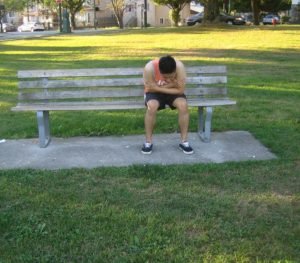A cluster headache causes excruciating episodes of pain in one side of the head, usually around the eye. Any individual of any age can suffer from this type of headache, but quite common in men and usually develops among those over 20 years old.
It is still unclear what exactly causes cluster headaches, but there appears a link to activity in a region of the brain called the hypothalamus. Those who smoke also face a higher risk. Some cases tend to run in families which might indicate a genetic link.
In most cases, cluster headaches tend to occur in recurrent episodes for a number of weeks (usually 4-12 weeks) and followed by periods without headaches that can last for months or even years. An episode can manifest every year over several years and can be life-long. Generally, the episodes reduce over time and there are treatment options to manage them.
What are the symptoms of a cluster headache?
A cluster headache can start abruptly without any warning. The pain can be severe and often described as burning, sharp or piercing sensation on one side of the head. The pain is usually felt around the temple, eye and oftentimes the face and can recur on the same area during every episode.

Oftentimes, the individual feels agitated and restless during an episode since the pain can be intense. Some react by pacing, rocking or banging the head against the wall. In most cases, one of these associated symptoms is present:
- Drooping or swelling of one eyelid
- Reddish and watery eye
- Sweaty face
- Smaller pupil in one eye
- Reddened ear
- Clogged or runny nose
Take note that these attacks typically last between 15 minutes up to 3 hours. Most occur between 1-8 times in a day.
Attack pattern
Cluster headaches typically occur on a daily basis in episodes that lasts for several weeks or months at a time before they recede. This is followed by remission that oftentimes last for months or years before the headaches erupt again.
During an episode of cluster headache, it often occurs at the same time every day. The episodes also seem to recur at similar periods of the year, most often during autumn or spring. Some individuals notice that there are certain triggers during the attacks such as exercise, warm temperatures, consuming alcohol or strong odors such as paint, perfume or petrol.
How to deal with cluster headaches
This type of headache is not considered life threatening but capable of causing significant agony and drastically affect quality of life, thus it is vital to consult a doctor so that effective treatment can be started.
In most cases, the main treatment options to reduce the pain right after a headache starts include sumatriptan injections, sumatriptan nasal spray or oxygen therapy. These treatments can help reduce the pain within 15-30 minutes.
Prevention
The commonly used treatment to prevent cluster headaches is verapamil which is a medication taken several times throughout the day. Monitoring using an electrocardiogram (ECG) is used by the doctor while this medication is used since it can lead to heart issues in some individuals.
